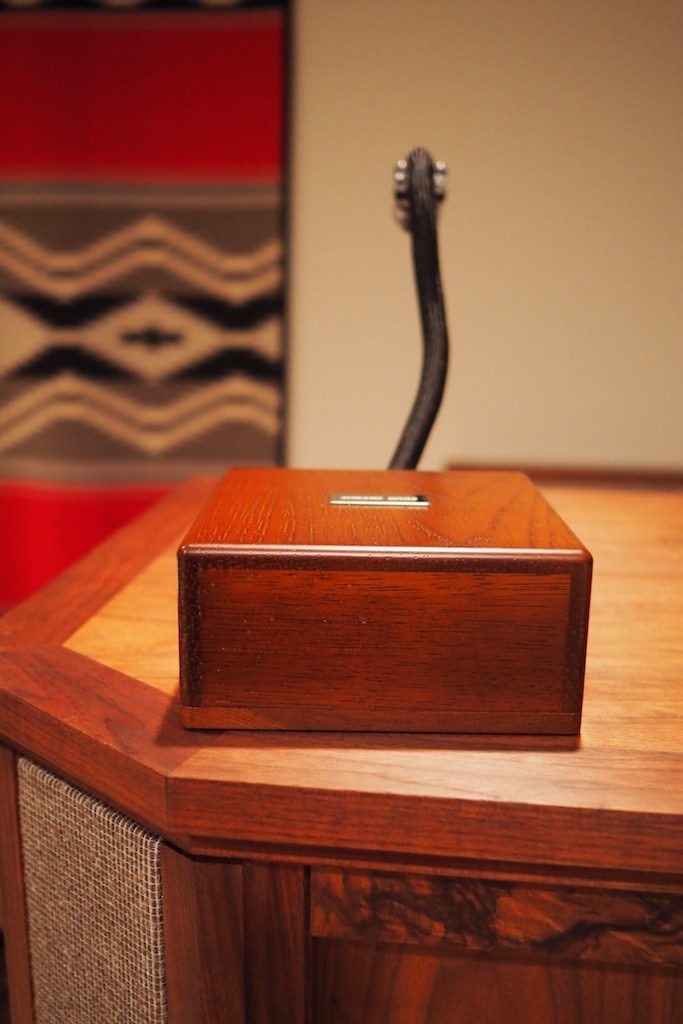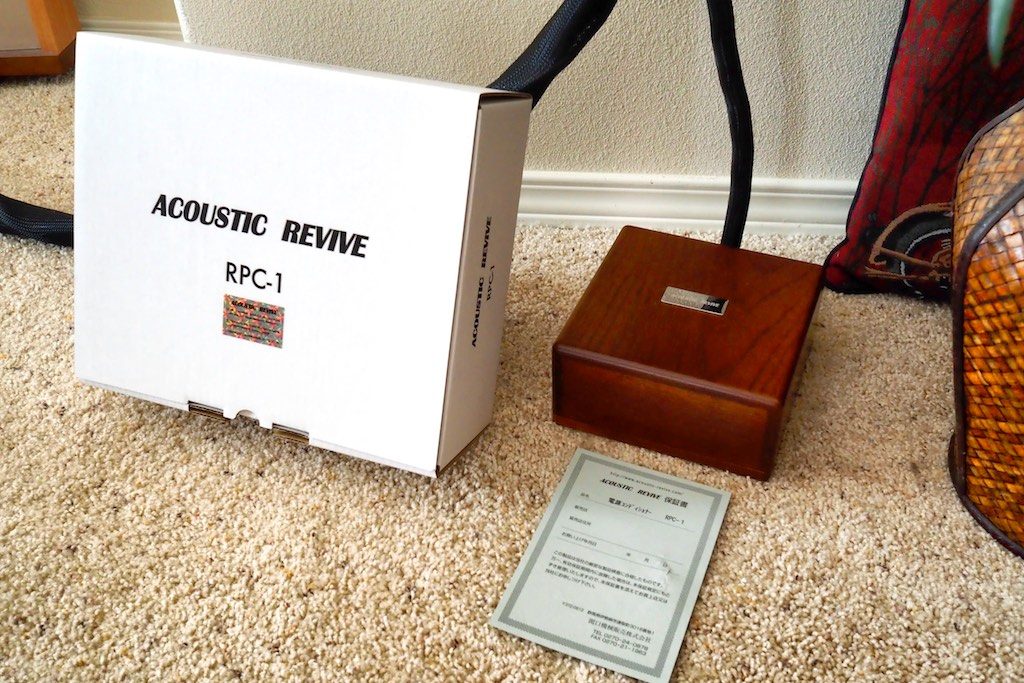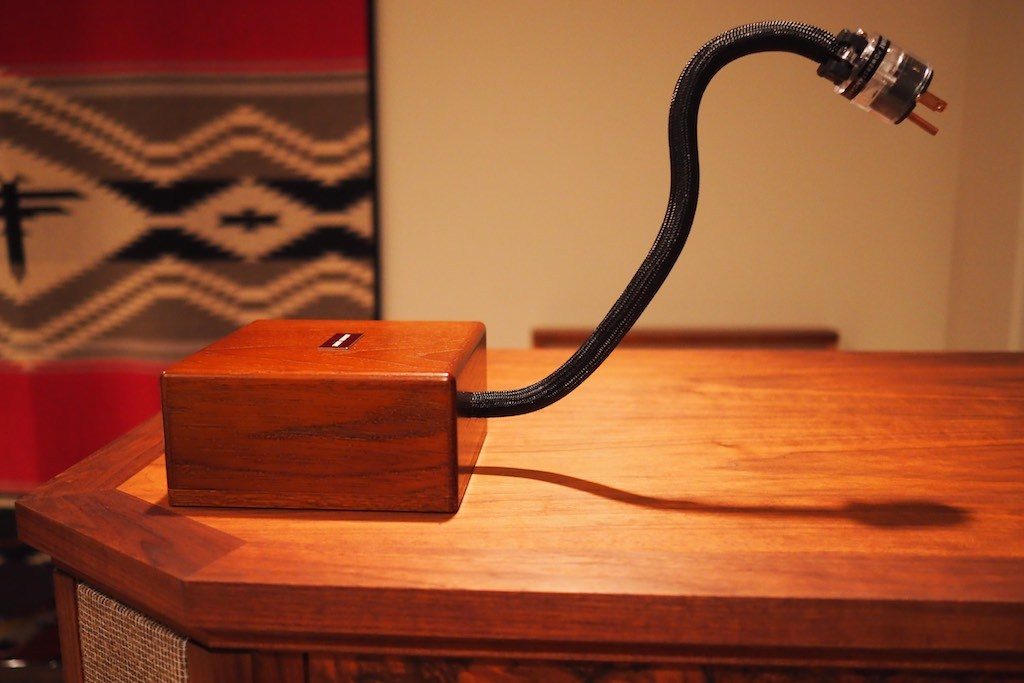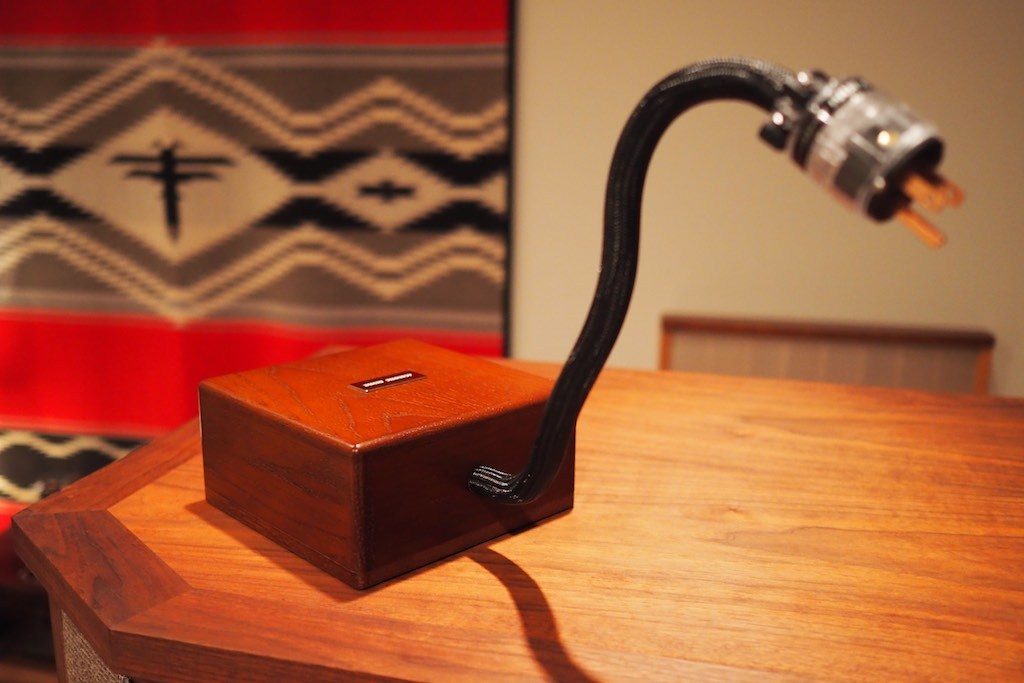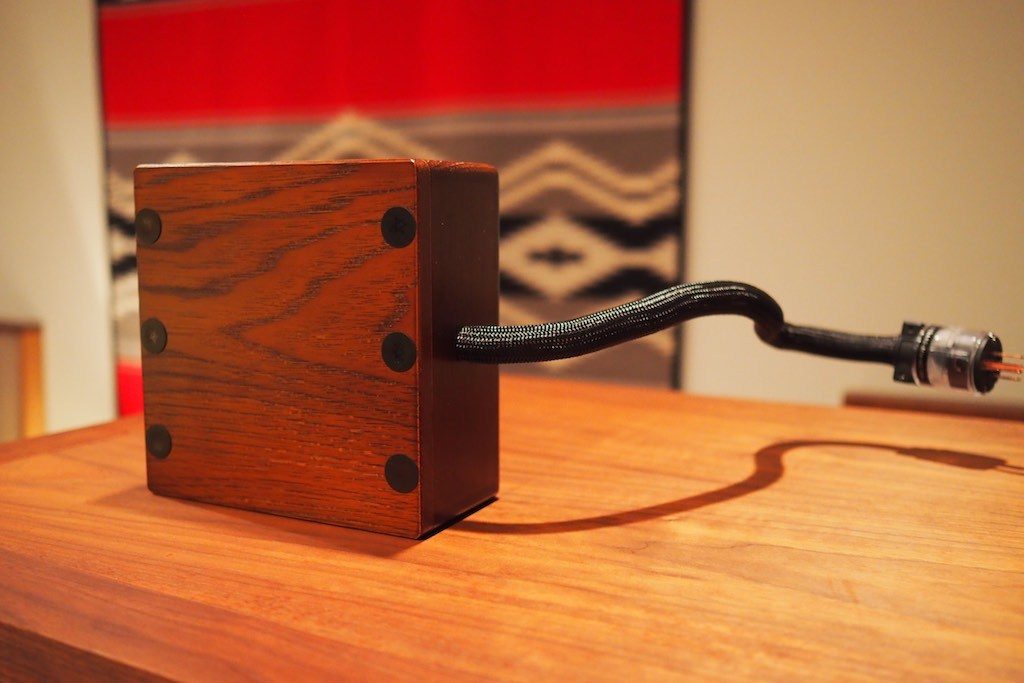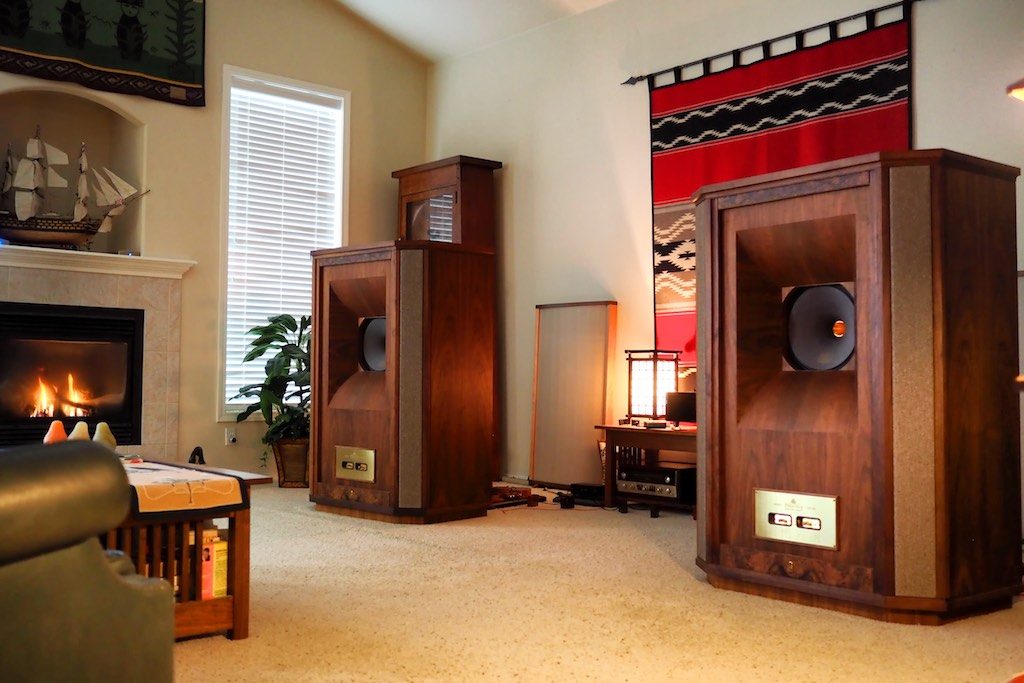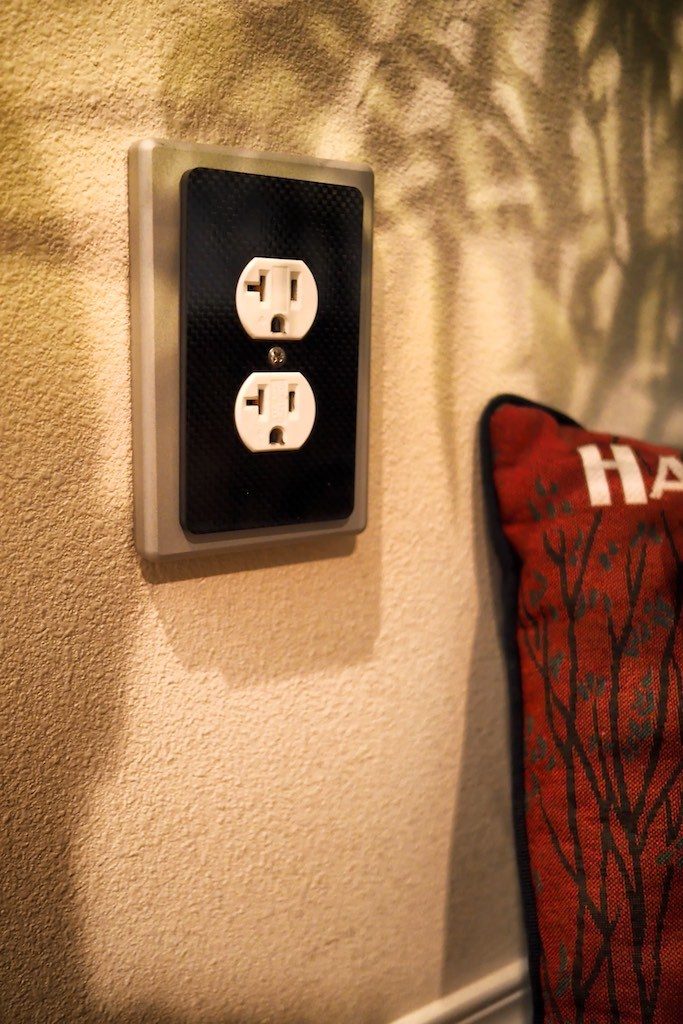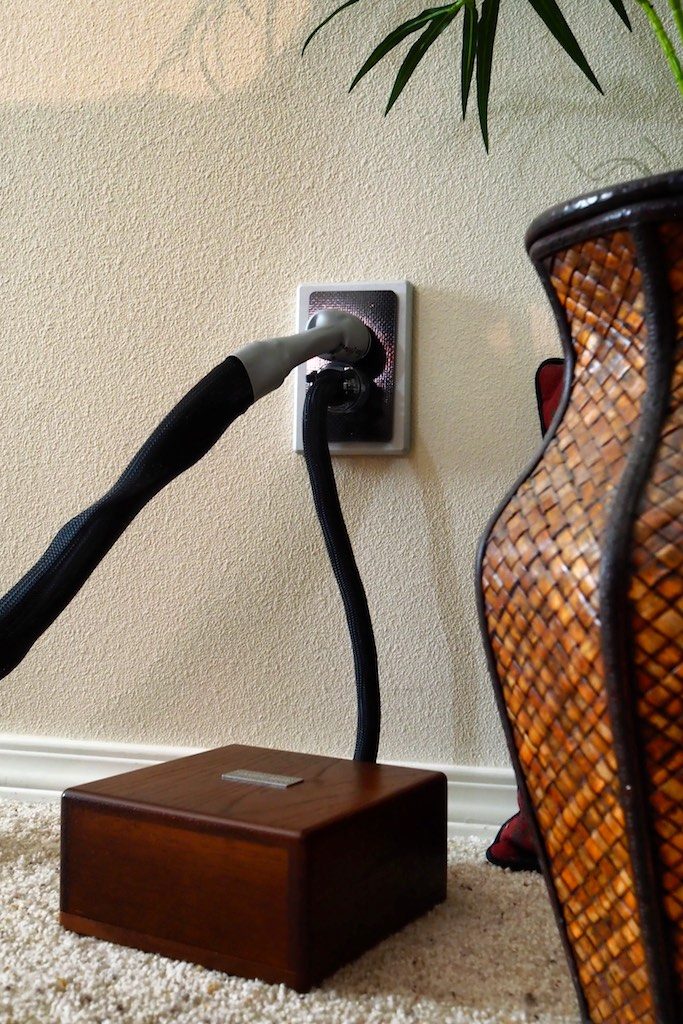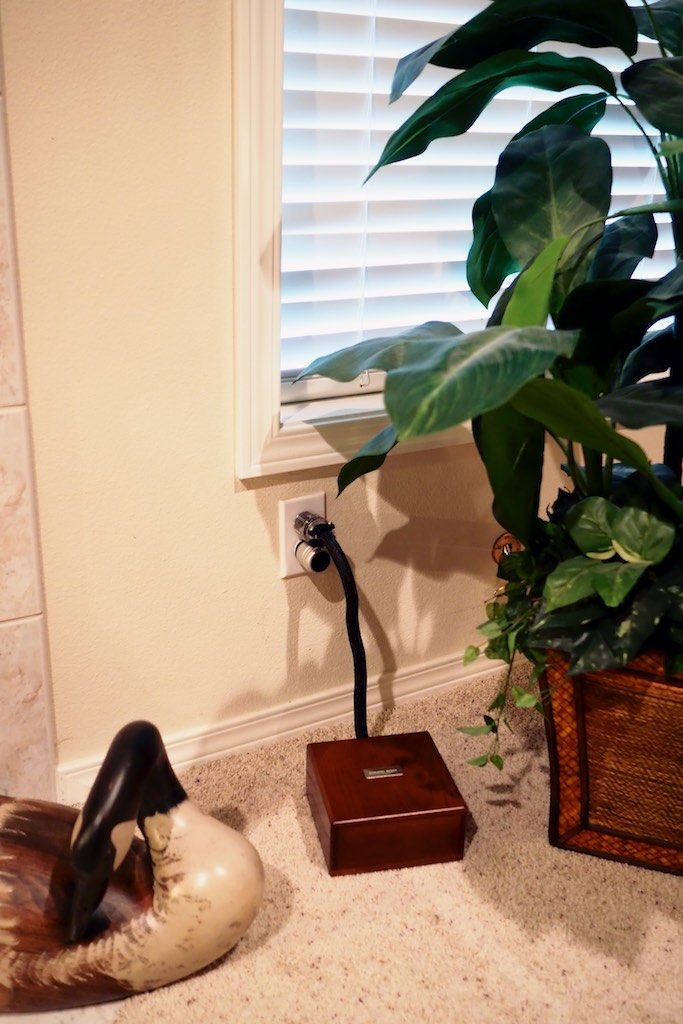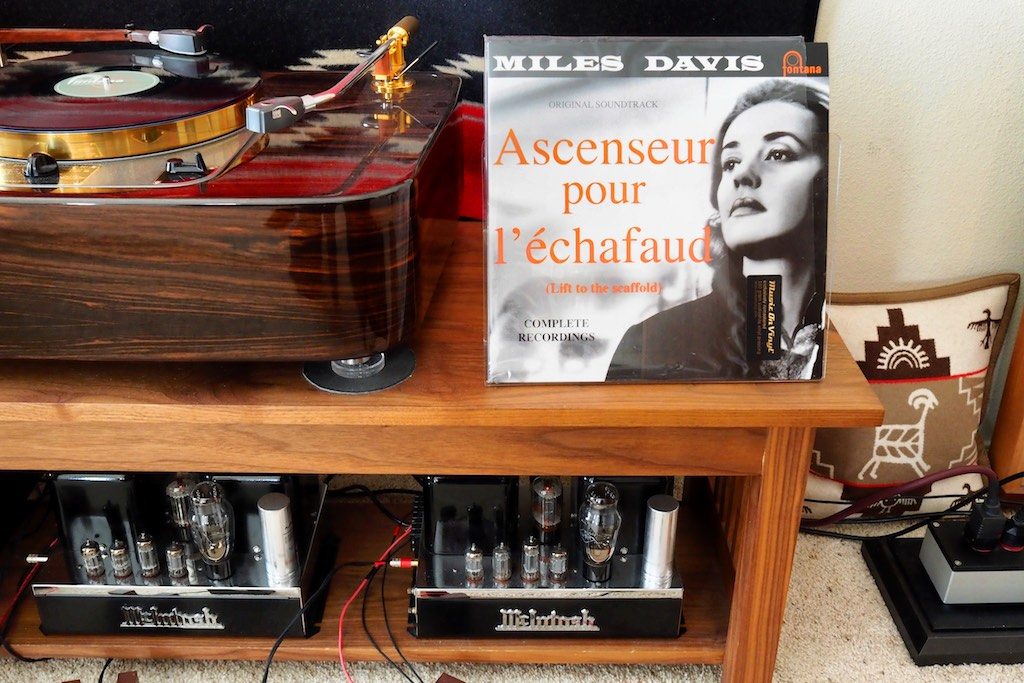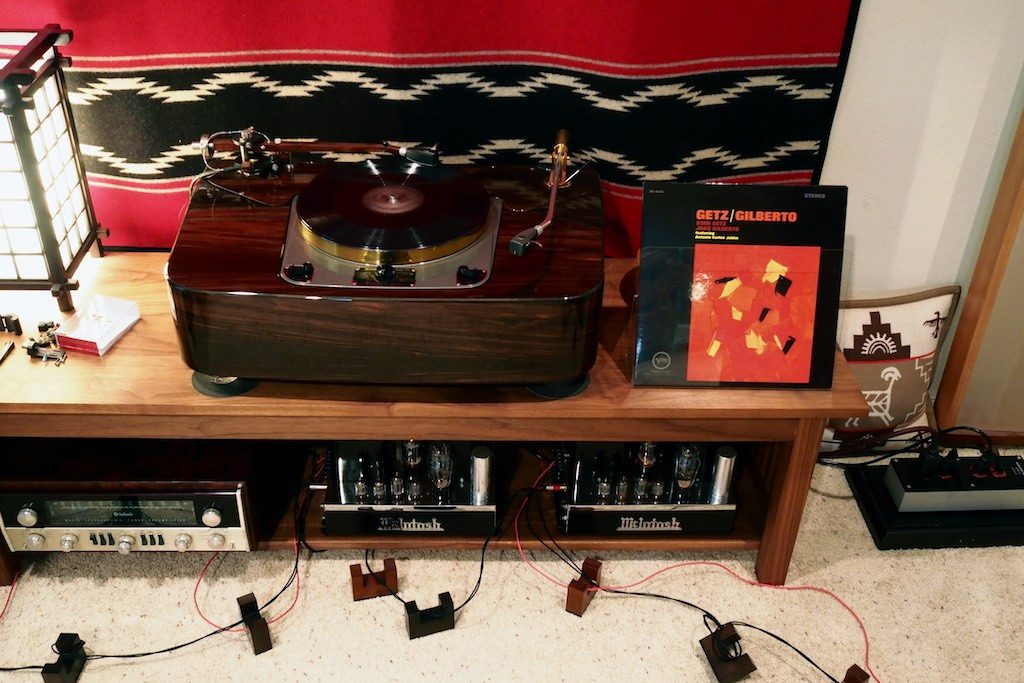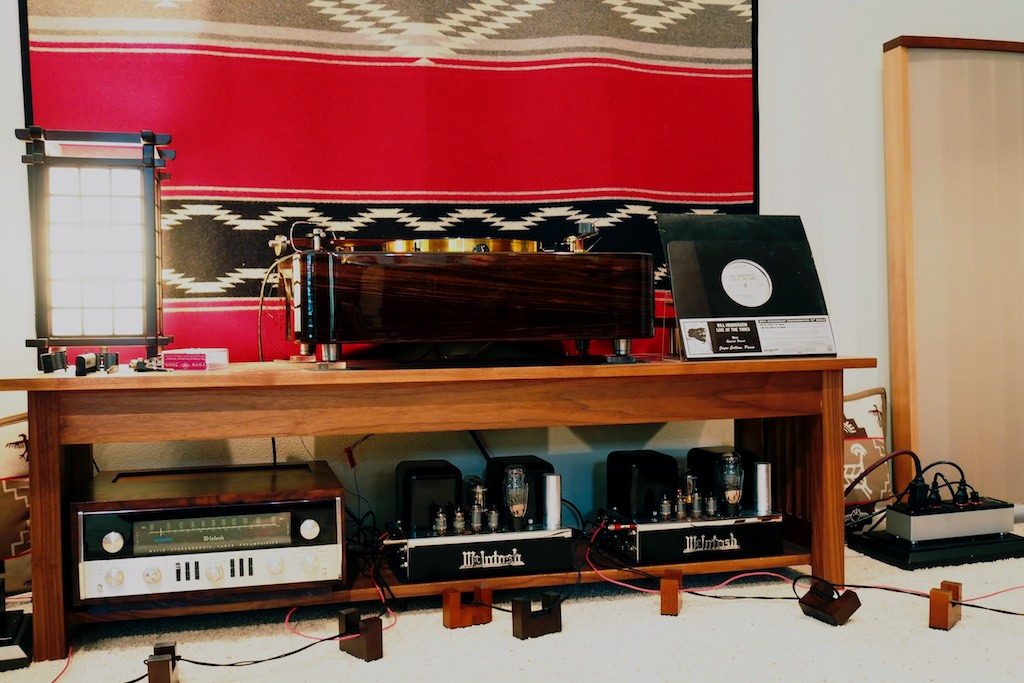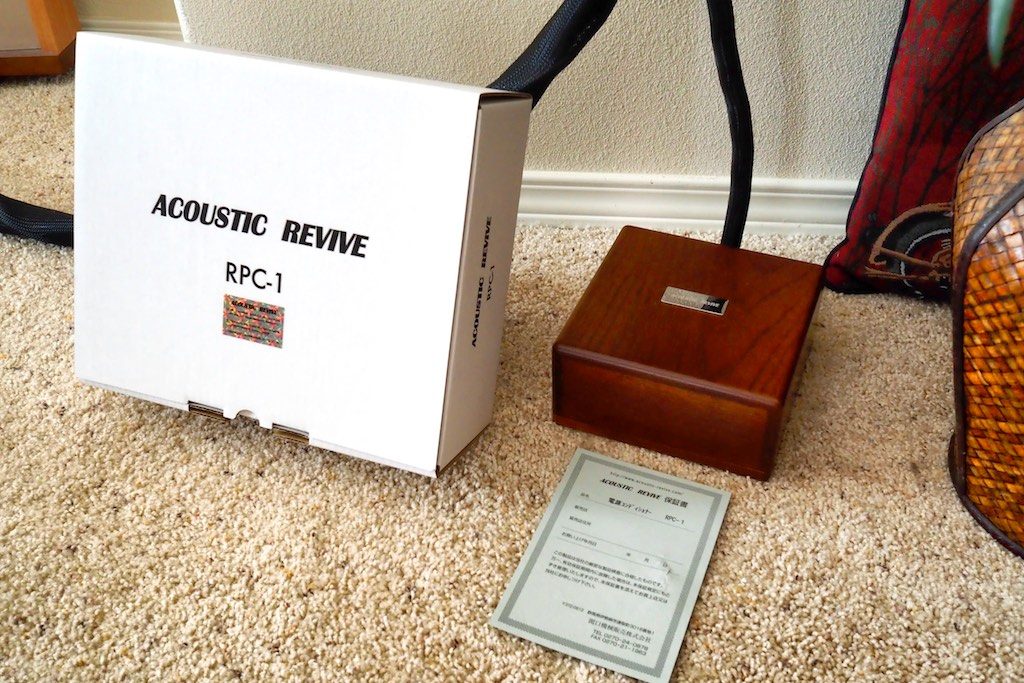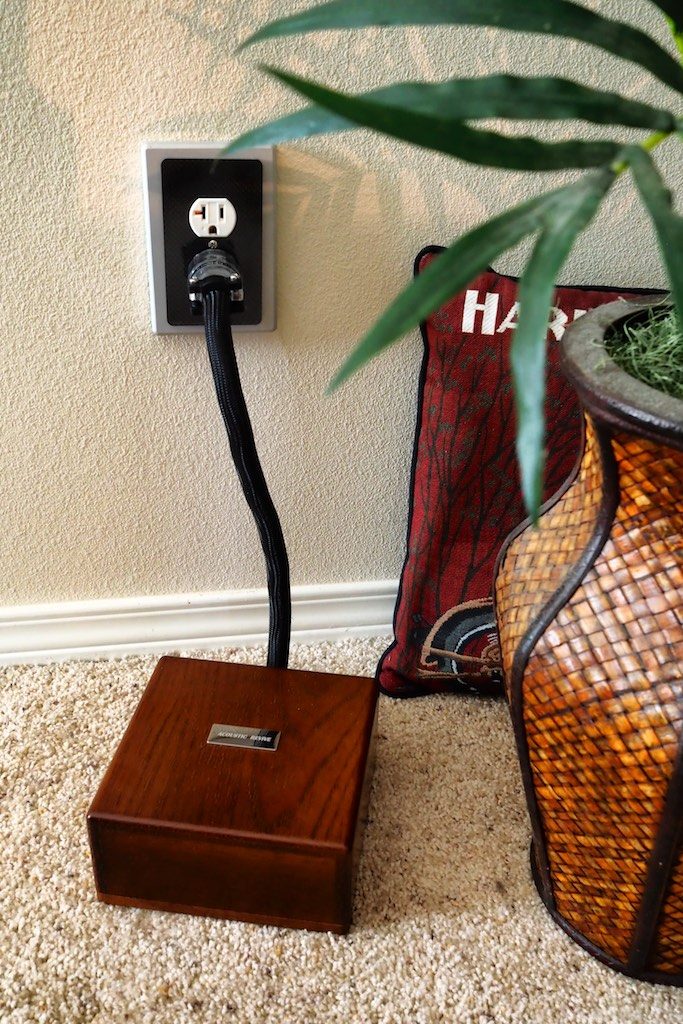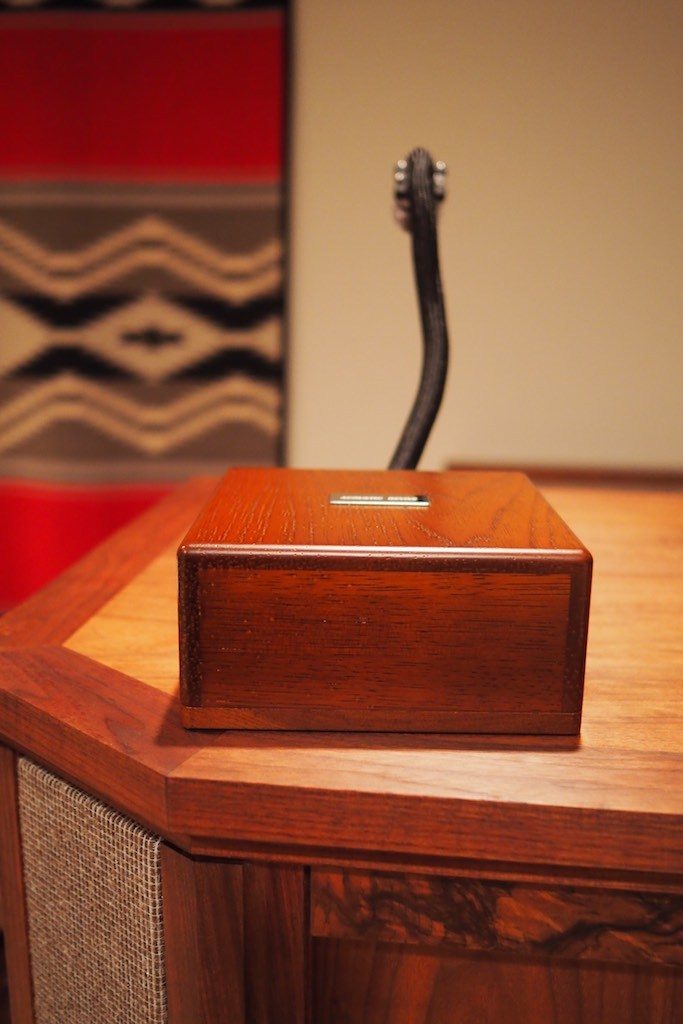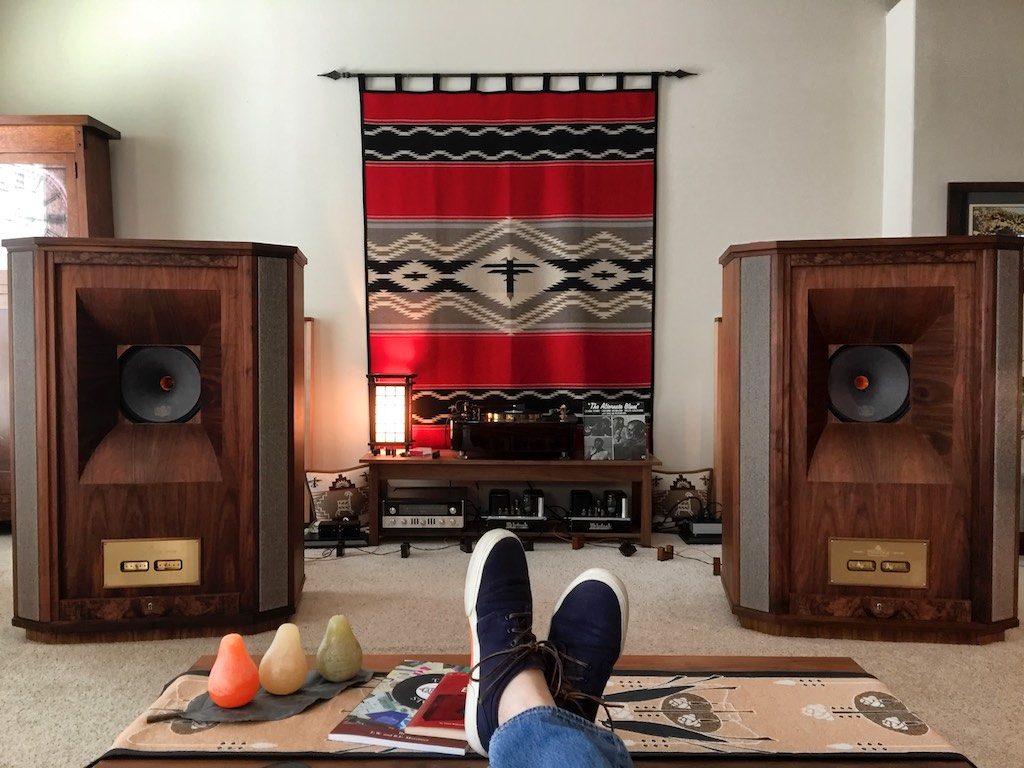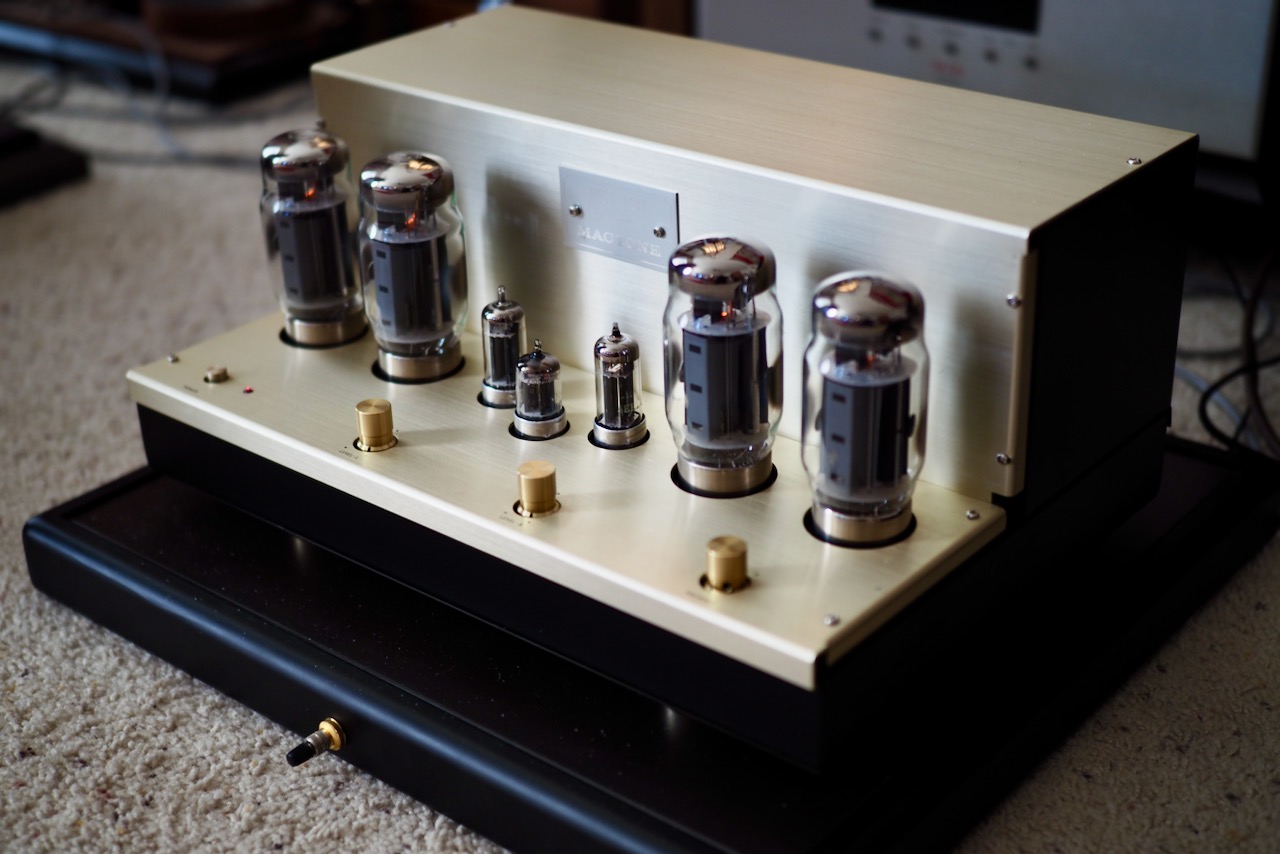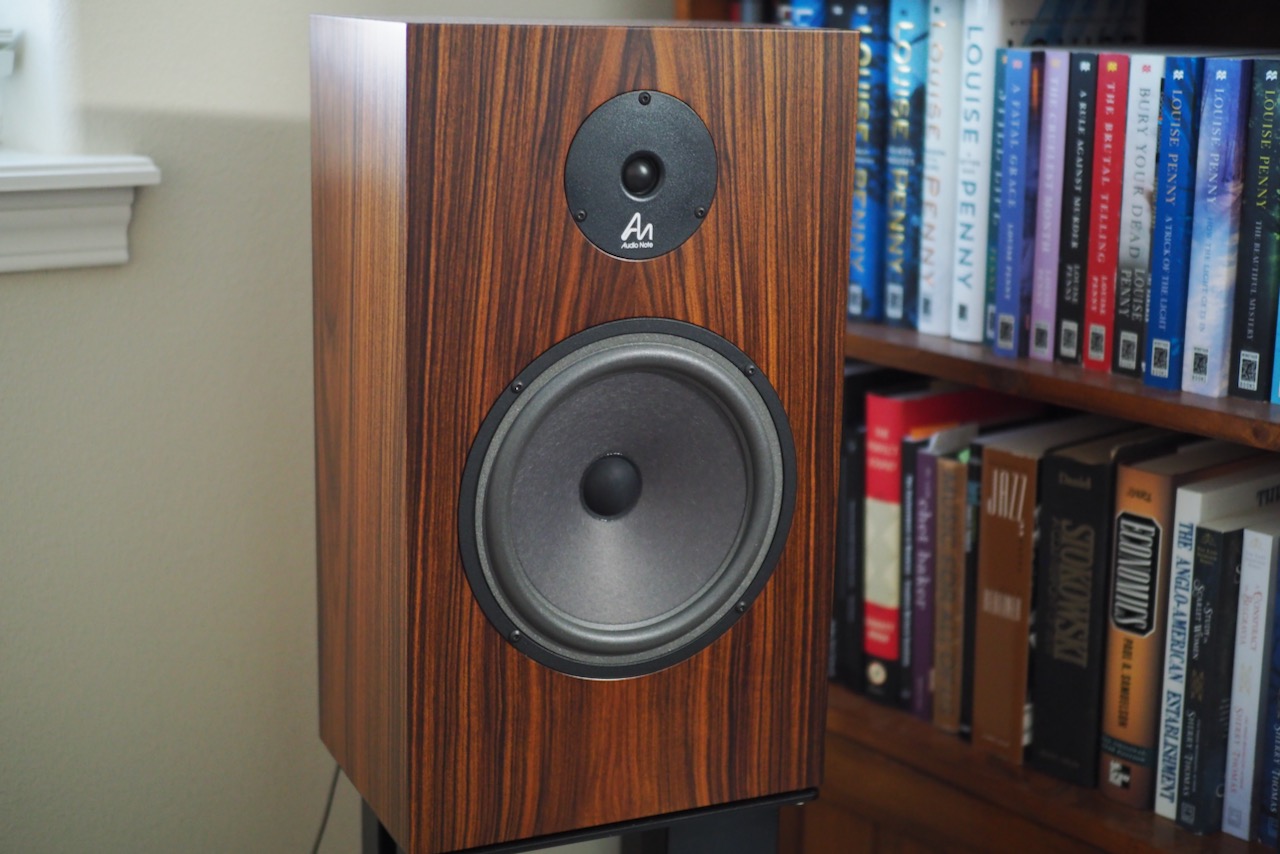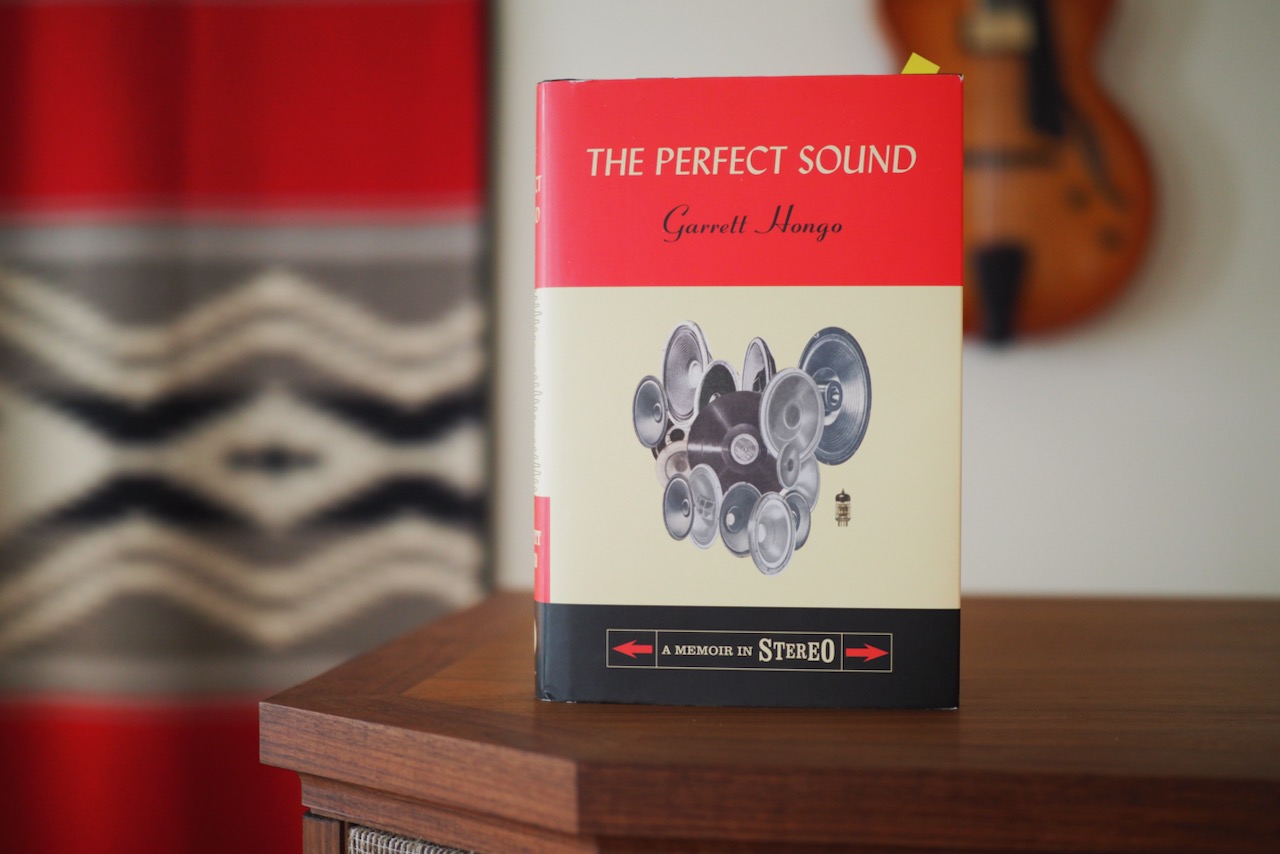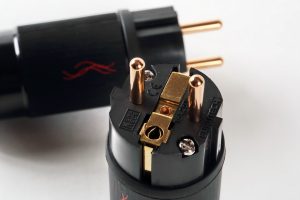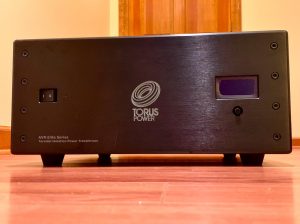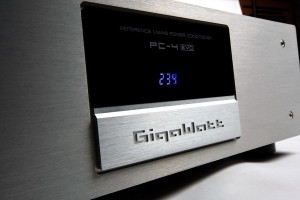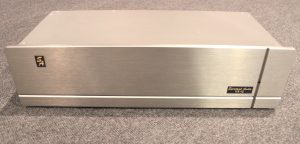Acoustic Revive RPC-1 Power Supply Conditioner
The intrigue usually starts with a message from Yoshi-san or Elia-san from the MuSon Project in Osaka, Japan, who export Japanese audio exotica to The World.
Every time I get a message from Messrs. Hontani I get pretty excited, because long experience has taught me that with their extremely good taste in all things audio that something very good is about to happen!
Take for example, it is Messrs. Hontani who have introduced me to the joys of Japanese audio exotica from the Leben Hi-Fi Stereo Company, Acoustic Revive, and the Spec Corporation, and the colorful & creative personalities behind those companies, like Mr. Taku Hyodo, Mr. Ken Ishiguro, and Mr. Shirokazu Yazaki, respectively. What a joy it has been!
In this particular case the message came from Elia-san, who told me he had just sent me an intriguing new audio device from the creative mind of Mr. Ken Ishiguro at Acoustic Revive, the new RPC-1 Power Supply Conditioner.
The Acoustic Revive RPC-1 Power Supply Conditioner
Acoustic Revive was founded by Mr. Ken Ishiguro to make ultra-quality high-performance audio products in 1996, making 2017 Acoustic Revive's 21st anniversary as a company.
Ishiguro-san is a talented and creative audio designer that develops and produces a wide range of specialty audio products that includes speaker cables & interconnects, AC power supply related products, personal computer & network audio products, loudspeaker stands, equipment vibration isolation devices, room tuning products, equipment tuning devices, EMF canceling & grounding devices, digital & analogue disk treatment devices, and ultra-quality connectors.
I have written about many of the Acoustic Revive products over the last nine or so years, and towards the end of this article I'll provide links to those articles, so you can do some additional reading if you wish.
The subject of this article, the new Acoustic Revive RPC-1 Power Supply Conditioner, has already caused quite a stir in Japan, winning the 2016 MJ Technology of the Year Accessories Division Excellence Award, so I was very curious to hear what all the fuss was about!
Like a child when Christmas morning arrives, I couldn't wait to tear open the FedEx package containing the RPC-1 Power Supply Conditioner when it arrived.
I wasn't disappointed either, for when I pulled the RPC-1 Power Supply Conditioner out of its shipping box and held it in my hands, I could tell that it was built to an extraordinary level of quality, and with the beautiful level of fit & finish that I have come to expect from Acoustic Revive products.
The RPC-1 has a beautiful furniture-grade Hickory enclosure that measures about 6.75-inches square by about 3.25-inches tall, and weighs in at about 2.63 pounds on my digital scale.
The power cord that exits the RPC-1 is the ultra-high quality PC-Triple C Acoustic Revive Power cord, and is about 16-inches long.
On the bottom of the Hickory enclosure are six little protective pads to cover the assembly access points, and to keep its fine finish from getting abraded.
The principle of operation of the RPC-1 Power Conditioner is based upon the research of the late Mr. Jun Shibata. Mr. Jun Shibata was the developer of the infrared mouse, and he found during his research that high-frequency noise on the AC line caused his prototype mice to malfunction.
Shibata-san developed a method to eliminate the high-frequency AC line noise that was causing the mice to malfunction, thus fixing the issue.
Shibata-san's high-frequency noise filtering method was based on using a capacitor, a resistor, a choke coil, etc., like a conventional noise filters do, but in addition to that he took the difference between two signals through sets of special coils, eliminating the high-frequency noise on the AC line without causing the deleterious effects that noise filters are sometimes known for.
The President of the HWT company, President Fukushima, inherited the intellectual property rights to this noise -cancelling technology through Shibata-san's will, and then developed it to sell as commercial noise elimination equipment for the industrial sector.
Mr. Ken Ishiguro was very impressed with the potential of Shibata-san's noise-cancelling technology for audio applications, and formed a collaboration between the HWT company and Acoustic Revive to develop an upgraded and more powerful version of what HWT sells to industrial clients, that is optimized specifically for high-performance audio use, and thus the Acoustic Revive RPC-1 Power Supply Conditioner was born.
The directions for use are to simply plug the RPC-1 into a wall or power strip outlet, and it will filter the in-wall AC to remove the high-frequency line noise before it can get into your hi-fi gear. Acoustic Revive says you can plug it into an outlet in a different room than your hi-fi gear is in and it will still have the same effect, as it filters all the AC on the same circuit in the house.
Like most hi-fi reviewers, my various hi-fi systems are in an almost constant state of change as I try out new things, whether it be new equipment, new equipment modifications, new interconnects, new speaker cables, new power cords, or in this case, a new high-performance in-wall line AC conditioning device, the Acoustic Revive RPC-1 Power Supply Conditioner.
For this review the bulk of my listening evaluations took place in my primary music system, which you can see directly above as well as in the accompanying photos. For more details about the system specifics at the time of the review you can read more here.
While doing listening comparisons, I found out that it took about 15 minutes after plugging in the RPC-1 Power Conditioner before its full auditory effects were realized. For listening comparisons, this time-lapse for getting the full measure of the RPC-1's performance made reviewing a little trickier than usual because I couldn't do quick A-B comparisons with it in, then out, of the system.
I found the best way to make listening comparisons was to leave the RPC-1 plugged in, working at its full potential while I established a listening baseline for an album, and then while still listening, unplugging the RPC-1 and listening while the filtering effect faded away, allowing for an easier method of comparison for its effect upon the music.
A note about RPC-1 placement. Acoustic Revive's instructions say that you can place the RPC-1 Power Conditioner in a number of locations and still experience its high-frequency noise filtering effect, like an AC outlet in a power strip, or an AC outlet in the listening room, or even an AC outlet in another room.
While it is true that there is great flexibility in placement of the RPC-1, I found that where I plugged in the RPC-1 Power Conditioner in relation to my system did make a fairly significant difference, so you will probably want to experiment with placement to find the outlet location that is optimum for your hi-fi.
I plugged the RPC-1 into a number of outlet locations to see what would happen.
First I plugged the RPC-1 into the same wall outlet I use to provide AC to my entire system (above), which consists of an Oyaide R-0 AC outlet mounted into an Acoustic Revive CB-1DB Receptacle Base Plate, combined with an Acoustic Revive CFRP-1F Carbon Fiber Outlet Plate, and which makes for a really stable and good sounding AC wall outlet connection for a hi-fi system.
When the RPC-1 was plugged into the main AC outlet I use to power my hi-fi electronics I found it exerted the greatest improvement (above).
When I plugged the RPC-1 into a regular outlet on the other side of my listening room, with no audio equipment plugged into it (above), the result was similarly positive in effect, but somewhat reduced in magnitude compared to when it was plugged into the outlet that powers the system.
The RPC-1 also worked well when plugged into an outlet in another room, but the magnitude of the improvement seemed to diminish the further away I placed it from my system.
My preference was to plug the RPC-1 Power Conditioner into the same outlet that I used to power my system, as I thought that provided the greatest improvement, and I left it that way for the rest of the review period.
Listening Impressions
I have written up my listening impressions about the RPC-1 several times now, then scrapped them, as I didn't feel I had adequately expressed how significant this device is, and how much it improved my listening experience during the review period.
I listened to a lot of LP's during the review period, and while listening to them two notable trends emerged in system performance when the RPC-1 was in use filtering out the high-frequency AC noise, the first being in terms of what is gone, and secondly, in terms of what becomes more there.
As far as what is gone, it was quite a revelation to hear my system after the high-frequency noise was removed by the Acoustic Revive RPC-1 Power Conditioner. A 'greyish' veil of noise that I wasn't even aware of prior to the RPC-1 was removed from my system, one that I didn't know was diminishing my ability to discern tone color, nuance, timbral & tonal subtleties, and in particular the sense of spaciousness in a recording, and the depth and layering in the soundstage.
When that 'long black veil' of high-frequency noise was removed by the RPC-1, the tone color popped forth more vividly. The nuance, timbral & tonal subtleties of the music blossomed before my ears. The sense of space increased remarkably, as did the three dimensions of the soundstage, which now seemed to glow with a tangible living presence.
For example, when listening to Miles Davis' Ascenseur pour l'echafaud it seemed as if my whole system 'bloomed' in every musical & sonic way possible with the RPC-1 filtering out the noise.
The sense of spaciousness in the opening cut "Générique" increase dramatically, as did the presence, nuance, and 'touch' of Miles' trumpet playing.
On "Évasion De Julien" and "Visite du Vigile" the bass lines were absolutely transformed with more obvious pitch definition, more vivid overtone presence, more of a sense of touch upon the strings, and more motive 'forcefulness' to the notes.
Upon unplugging the RPC-1, the musicians receded into a more compressed soundstage and became more two-dimensional, the sense of space around the instruments decreased, and the overall sense of space shrank rather dramatically.
Without the RPC-1 the sense of instruments' visceral presence decreased, the sense of bass pitch definition diminished noticeably, overtones decreased and didn't trail off as long, the subtle changes in chordal tone color were less obvious, and by comparison, everything sounded a little 'grey' and 'dull' compared to when the RPC-1 was plugged in and filtering the high-frequency noise out of the line AC.
Given that the RPC-1 filters out the high-frequency noise, I was surprised how much the absence of high-frequency noise also improved the low-frequency articulation in the music as well – an unexpected bonus.
My Analogue Productions 45RPM version of the Getz / Gilberto album is a wonder both musically & sonically, and it sounds great even without the RPC-1 conditioning the line AC, but when the RPC-1 was conditioning the line AC, the sense of presence of the musicians increased, the subtle details of color, tone, and texture opened up, and my listening room became awash in music that seemed free of system constraints, filling the room with a natural and life-like ambience that was really uncanny and pleasant to hear.
I have a really interesting album that Classic Records put out quite a few years ago so listeners could compare the difference in sonics & musicality between a record cut at 33 1/3 RPM and 45 RPM on the same song, with everything else in the production being the same.
The album is Bill Henderson Live At The Times, and the song is "Send In The Clowns," with Bill Henderson singing, and Joyce Collins playing the piano.
It's a beautiful intimate number that was recorded in the natural & spacious sounding setting of the Times Restaurant, in 1975.
Even a quick listen demonstrates the superior sonics & musicality that records achieve when cut at 45 RPM over those cut at 33 1/3 RPM, it's not even close.
I mention this record specifically, because the difference in the magnitude of the sonics & musicality between 33 1/3 RPM and 45 RPM versions of the song are similar in magnitude to what I hear between the RPC-1 not being plugged in, and being plugged in and filtering out the high-frequency noise in the line AC – it's an very tangible difference in performance.
To put it simply, the RPC-1 allowed my 33 1/3 RPM LP's to sound more like my 45 RPM LP's, and my 45 RPM LP's sounded, well, unparalleled!
Listening to record after record, the Acoustic Revive RPC-1 Power Conditioner impressed upon me how important the quality of the AC is that I'm feeding my components with, and that's even with the really good, clean, power where I live, that is the envy of many an audio enthusiast.
When the Acoustic Revive RPC-1 Power Conditioner was in the system conditioning the AC line it was if a cloud of grey haze & grunge lifted from my system to reveal the full tone, color, textures, musicality, and sonics potential that my system is capable of, and the difference was not subtle.
Summary
The Acoustic Revive RPC-1 Power Conditioner is a finely crafted AC line filter that makes a rather significant improvement to the performance of a hi-fi system, and it was easy for me to hear why it won the 2016 MJ Technology of the Year Accessories Division Excellence Award in Japan.
Pros: The RPC-1 Power Conditioner didn't change the tonal balance of my hi-fi at all, it just allowed my hi-fi to perform at its very best, and to reach the performance level that it is capable of when fed a diet of high-quality AC with the high-frequency noise filtered out.
It was quite a revelation to hear my system after the high-frequency noise was removed by the Acoustic Revive RPC-1 Power Conditioner, it was as if the clouds in a grey sky lifted and let the sunlight shine in, and everything both musically & sonically improved by a significant margin.
The improvement in tone color, nuance, timbral & tonal subtleties, overall musicality, and particularly the sense of spaciousness in a recording, and the depth and layering in the soundstage, was rather remarkable.
Cons: I would have liked to have had a longer power cord on the RPC-1, as that would have allowed more flexibility in positioning it. As it is the power cord is just long enough to reach the bottom outlet when the RPC-1 is sitting on the floor.
I would have preferred that the RPC-1 had an IEC connector so I could have used my own power cord with a length that would have allowed me to position it where I wanted to, as I would have liked to display the RPC-1 more prominently in my system, as it is a work of art in its own right. Also, not having an attached Acoustic Revive power cord (they're expensive) would have reduced the price.
Ah, speaking of price, unfortunately that is something of a downside of the RPC-1, as it sells for $2,250 USD in North America, so perhaps not too many people are going to be able to experience its considerable charms.
If you have the disposable income available to buy an RPC-1, I can't imagine you being anything other than overjoyed with the improvement to system performance it can make.
Conclusions
In case you are wondering how much I like the Acoustic Revive RPC-1 Power Conditioner, I can inform you that it has taken up permanent residency in my system, as I just couldn't bear to let it go. To lose the RPC-1's AC line filtering effect once heard is unimaginable!
This is the real deal folks, and I recommend that you try to get a listen to one of these RPC-1's to hear for yourself what filtering out the high-frequency noise in the AC can do for your system's performance, even if you can't afford to purchase one – highly recommended!
The Acoustic Revive RPC-1 Power Conditioner is available in the USA for $2,250 through Joe Cohen's The Lotus Group.
For availability in other parts of the world please consult the Acoustic Revive website, or contact exporter Yoshi Hontani at the MuSon Project directly if you need additional assistance.
Previous Acoustic Revive Articles by Jeff Day
If you'd like to read more about the other Acoustic Revive products I've written about over time, here's a complete index for your reference:
Chapter 1: The RR-77 Schumann Ultra Low-Frequency Pulse Generator – 6Moons, February 2008.
Chapter 2: The RIQ-5010 / RIQ-5010W Quartz Insulators; QR-8 Quartz Resonators – 6Moons, March 2008.
Chapter 3: The RCC-24 Ground Conditioner; SIP-8F RCA Input Shorting Plugs; QR-8 Quartz Resonators – 6Moons, May 2008.
Chapter 4: The RPT-2 & RPT-4 Ultimate Power Distributors, Power Reference AC Power Cords – PF Issue 39, September-October, 2008.
Chapter 5: The REM-8 EMF Canceler – PF Issue 40, November-December, 2008.
Chapter 6: The RWL-3 Acoustic Conditioner, CB-1DB Receptacle Base Plate, the CFRP-1F Carbon Fiber Outlet Plate, and the CS-F2 Outlet Stabilizer – PF Issue 42, March-April, 2009.
Chapter 6 "a": The RIO-5II Negative Ion Generator & RD-3 Disc Demagnetizer – PF Issue 45, September-October, 2009.
Chapter 7: The Custom Series Loudspeaker Stands, the RST-38 & TB-38 Quartz Under-Boards, and the RAF-48 Air Floating Board – PF Issue 47, January-February, 2010.
Chapter 8: Single Core Speaker Cables, Single Core RCA Interconnects, and the RCI-3 Cable Insulators – PF Issue 49, May-June, 2010.
Chapter 9: The RAS-14 AC Power Conditioner and the USB-1.0SP USB Interconnect – PF Issue 55, May-June 2011.
Chapter 10: The RR-777 Schumann Pulse Generator, the RL-30 Mark III Analogue Disc Demagnetizer, the CB-1DB receptacle base plate, CFRP-1F carbon fiber outlet plate, and the Acoustic Revive modified Oyaide R-1 receptacle – PF Issue 68, July-August 2013.
The Eleventh House: The RR-888 Schumann Pulse Generator, the Single Core PC-TripleC RCA interconnects, the Single Core PCOCC-A RCA interconnects, the Single Core Line-1.0RS RCA interconnects, the CB-1DB receptacle base plate, the CFRP-1F carbon fiber outlet plate, and the RCI-3H cables lifts – PF Issue 76, November-December 2014.
The End
Many thanks to Messrs. Hontani and Mr. Ken Ishiguro for making the Acoustic Revive RPC-1 Power Conditioner available to me to experience and write about.
As always, thanks for reading my articles, and may the tone be with you and the music make you happy!




